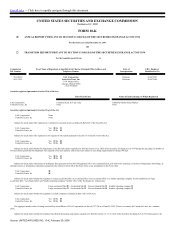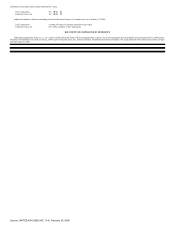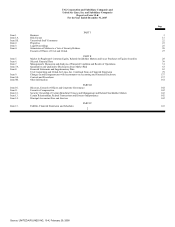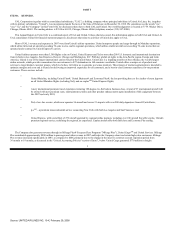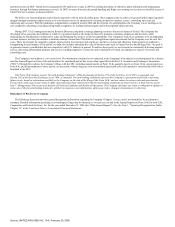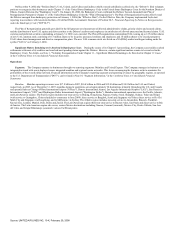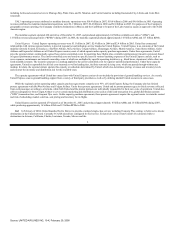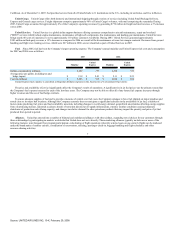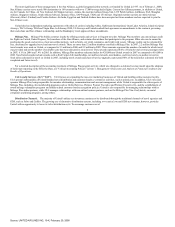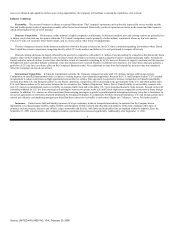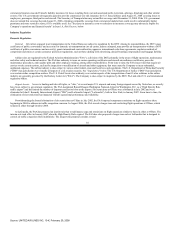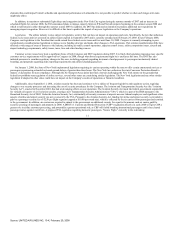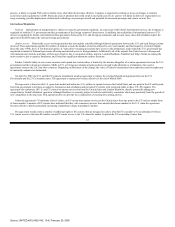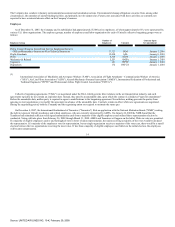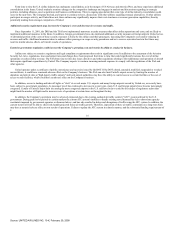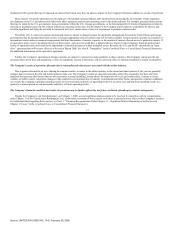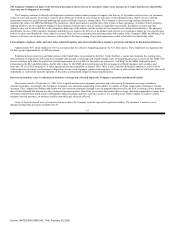United Airlines 2007 Annual Report Download - page 10
Download and view the complete annual report
Please find page 10 of the 2007 United Airlines annual report below. You can navigate through the pages in the report by either clicking on the pages listed below, or by using the keyword search tool below to find specific information within the annual report.
lower-cost channels and capitalize on these cost-saving opportunities, the Company will continue to expand the capabilities of its website.
Industry Conditions
Seasonality. The air travel business is subject to seasonal fluctuations. The Company's operations can be adversely impacted by severe weather and the
first and fourth quarter results of operations normally reflect lower travel demand. Historically, results of operations are better in the second and third quarters
which reflect higher levels of travel demand.
Domestic Competition. The domestic airline industry is highly competitive and dynamic. In domestic markets, new and existing carriers are generally free
to initiate service between any two points within the U.S. United's competitors consist primarily of other airlines, a number of whom are low-cost carriers
("LCC(s)") with cost structures lower than United's, and, to a lesser extent, other forms of transportation.
The rate of capacity increases in the domestic market has slowed in the past several years, but LCCs have continued expanding into markets where United
flies. United has extensive experience competing directly with LCCs in its markets and believes it is well positioned to compete effectively.
Domestic pricing decisions are largely affected by the need to be competitive with other U.S. airlines. Fare discounting by competitors has historically had a
negative effect on the Company's financial results because United often finds it necessary to match competitors' fares to maintain passenger traffic. Attempts by
United and other network airlines to raise fares often fail due to lack of competitive matching by LCCs; however, because of capacity constraint and the pressure
of higher fuel prices and other industry conditions, some fare increases have occurred. Because of different cost structures, low ticket prices that may generate a
profit for a LCC may have an adverse effect on the Company's financial results. Also, additional revenue from fuel-related fare increases may not completely
offset the Company's increased cost of fuel.
International Competition. In United's international networks, the Company competes not only with U.S. airlines, but also with foreign carriers.
Competition on specified international routes is subject to varying degrees of governmental regulations. Recently the U.S. and European Union ("EU") reached
an agreement to reduce restrictions on flight operations between the two entities. This agreement is expected to increase competition on United's transatlantic
network from both U.S. and European airlines. In our Pacific operations, competition will be increasing as the governments of the U.S. and China permit more
U.S. and Chinese airlines to fly new routes between the two countries. See "Industry Regulation," below. Part of United's ability to successfully compete with
non-U.S. carriers on international routes is its ability to generate traffic from and to the entire U.S. via its integrated domestic route network. Foreign carriers are
currently prohibited by U.S. law from carrying local passengers between two points in the U.S. and United experiences comparable restrictions in many foreign
countries. In addition, U.S. carriers are often constrained from carrying passengers to points beyond designated international gateway cities due to limitations in
air service agreements or restrictions imposed unilaterally by foreign governments. To compensate for these structural limitations, U.S. and foreign carriers have
entered into alliances and marketing arrangements that allow these carriers to feed traffic to each other's flights (see "Alliances," above, for further details).
Insurance. United carries hull and liability insurance of a type customary in the air transportation industry, in amounts that the Company deems
appropriate, covering passenger liability, public liability and damage to United's aircraft and other physical property. United also maintains other types of
insurance such as property, directors and officers, cargo, automobile and the like, with limits and deductibles that are standard within the industry. Since the
September 11, 2001 terrorist attacks, the Company's insurance premiums have increased significantly. Additionally, after September 11, 2001,
9
Source: UNITED AIR LINES INC, 10-K, February 29, 2008

